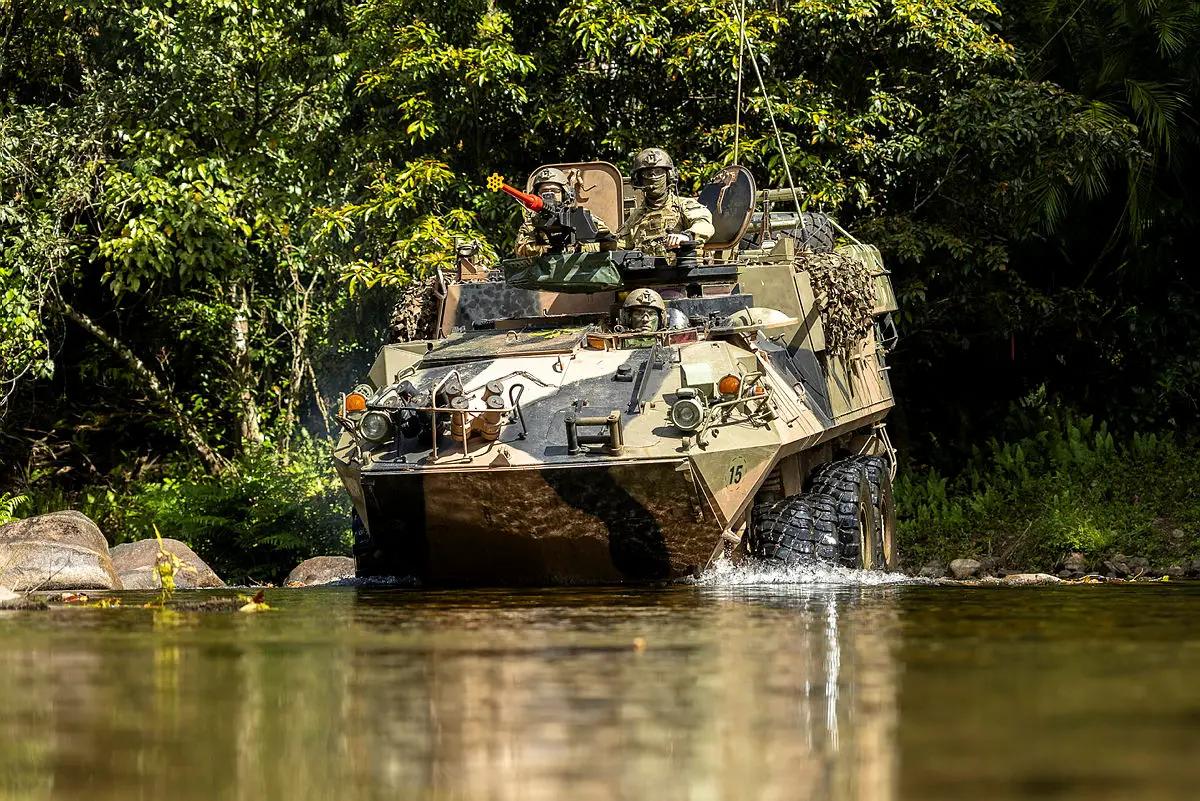The 2nd Cavalry Regiment completed 12 days of training last month that culminated in a 48-hour full mission profile using dismounted and mounted force elements to hone their skills in a jungle environment. The soldiers conducted reconnaissance in the jungle and on urban centres, completed raids and coordinated squadron-level attacks supported by ASLAV (Australian Light Armoured Vehicle) eight-wheeled armoured reconnaissance vehicle, and low-level jungle operations, including resupply. The training will prove useful as the regiment prepares to deploy to Papua New Guinea for Exercise Wantok Warrior later this year.
The Australian Light Armoured Vehicle (ASLAV) is an eight-wheeled armoured reconnaissance vehicle of the LAV II family used by the Australian Army. It was built by General Dynamics Land Systems Canada, and developed from the U.S. Marine Corps’ LAV-25 and Canadian Army’s Bison armoured fighting vehicles.The ASLAV is a highly mobile, eight-wheel drive armoured fighting vehicle that can be deployed by land, sea or air, in Royal Australian Air Force C-130s or C-17s. The ASLAV is capable of speeds of 100 km/h (62 mph) and has a maximum range in excess of 660 km (410 mi). The eight-wheel drive provides excellent cross-country mobility and redundancy.

Officer Commanding A Squadron Major Laurence Smith said,“Training in the jungle in the Tully Training Area was different to operating in more familiar environments, like the Townsville Field Training Area. The training was focused on exposing troops to operating in the jungle while dismounted, as well as understanding the complexities of operating mounted in armoured vehicles in the density of jungle terrain. We trained in a series of realistic scenarios that simulate the environments where we may operate in the near region, dense jungle, jungle urban fringe, where communications and endurance away from vehicles can be challenging. Armoured vehicles needed to operate differently depending on the terrain. The vehicles can only go to in certain areas; it’s quite restrictive terrain. We can’t operate how we traditionally would, so we need to understand how the terrain affects mounted manoeuvre. You’ve got to slow down; everything is slower and more difficult.”













